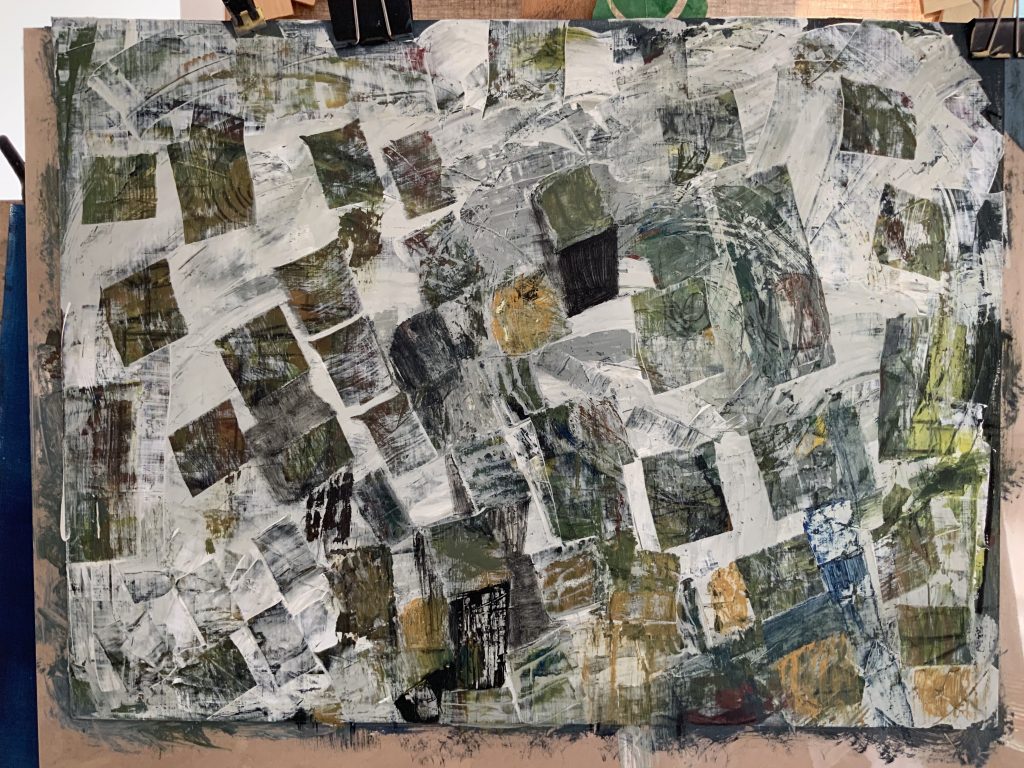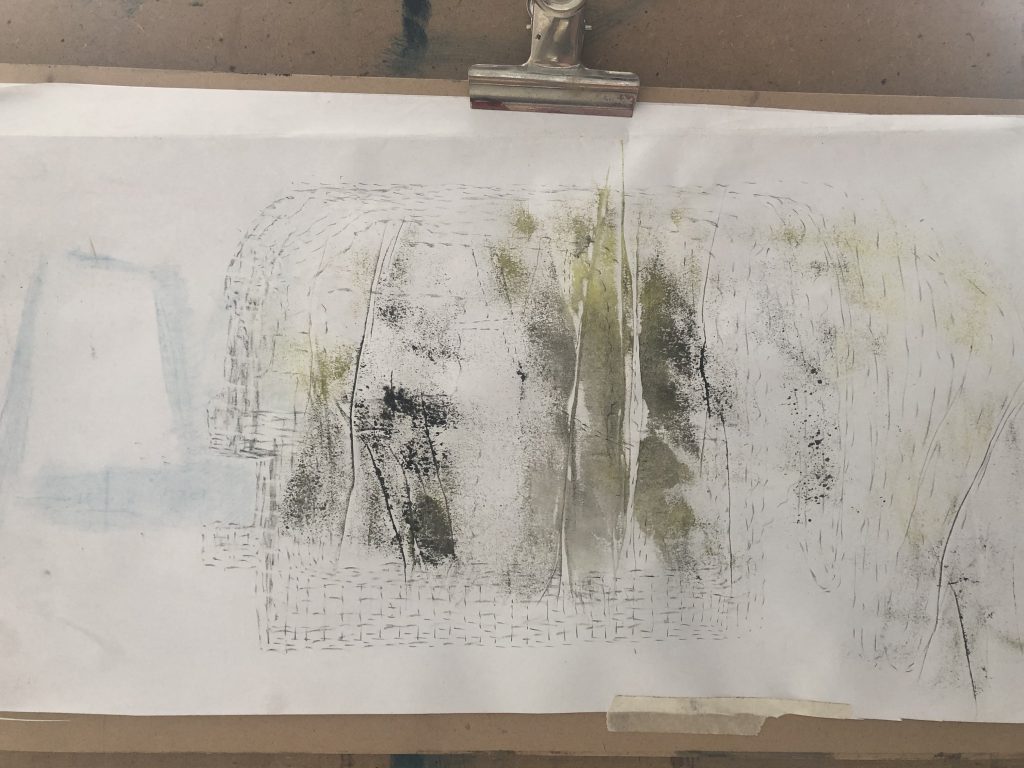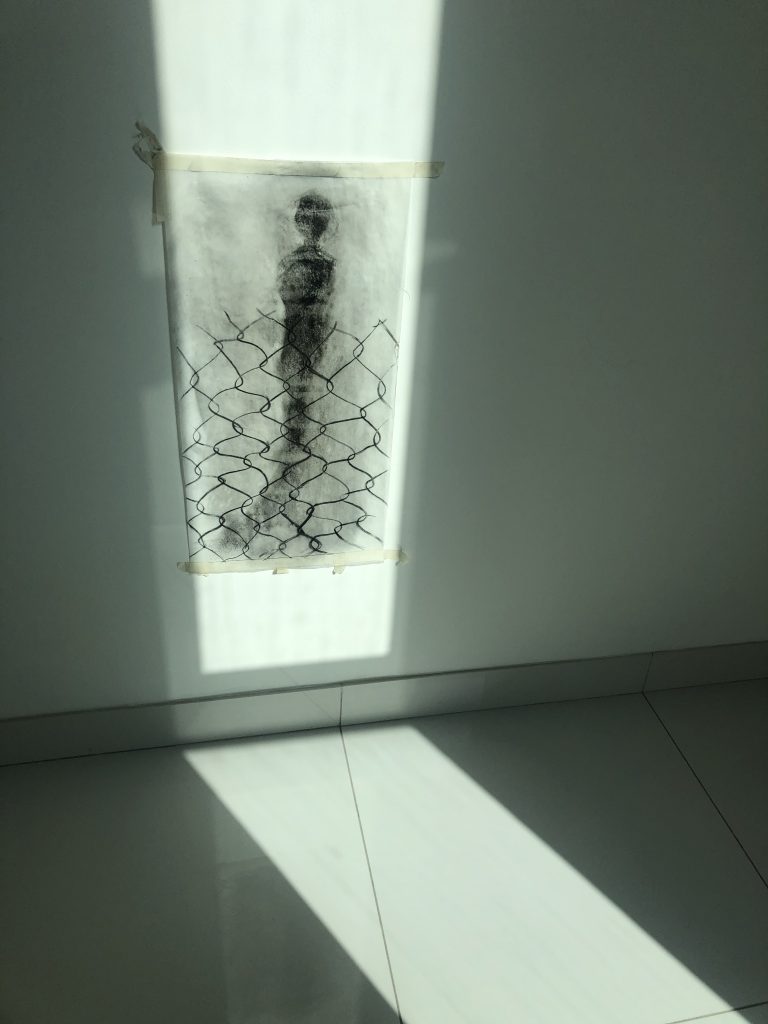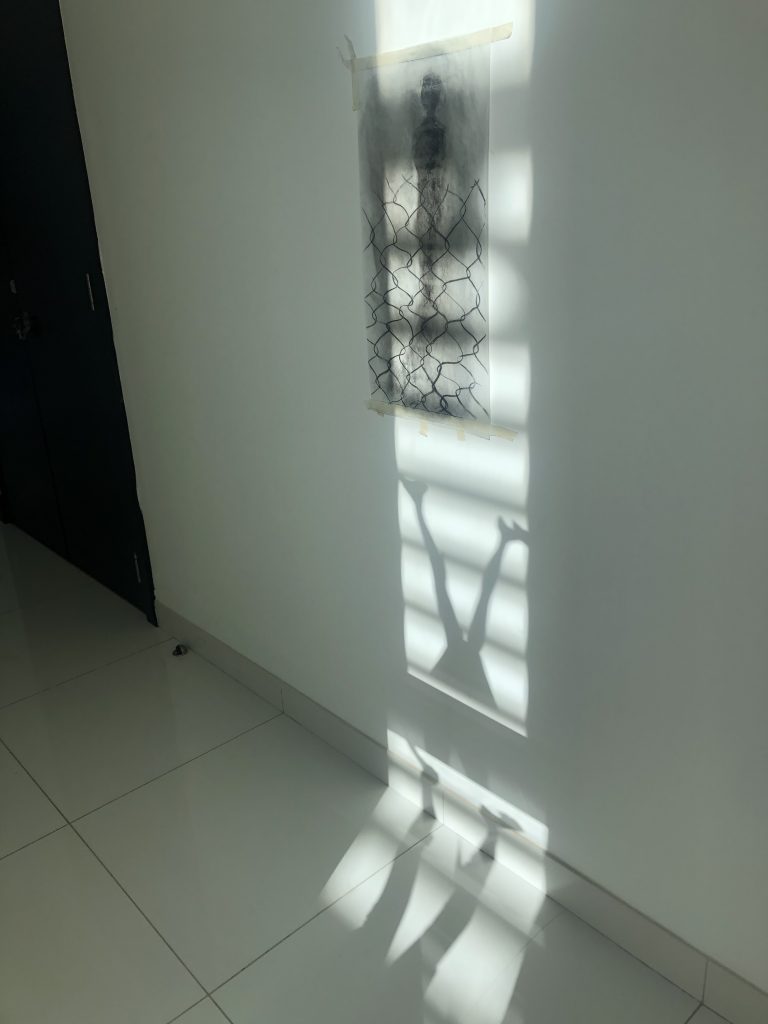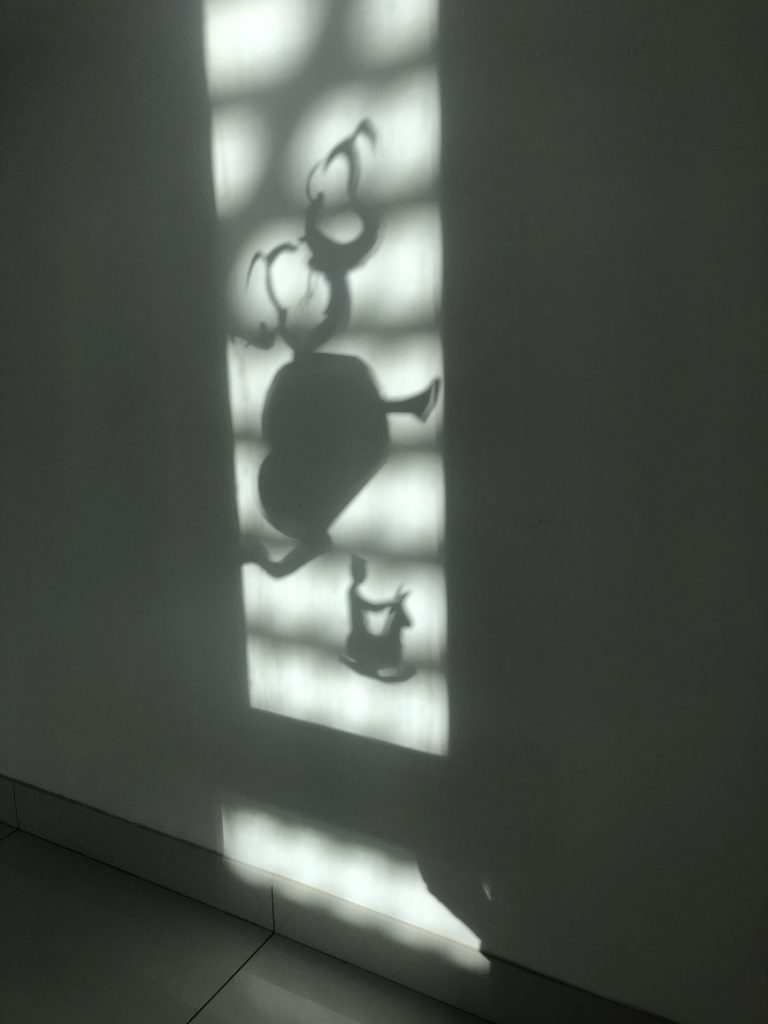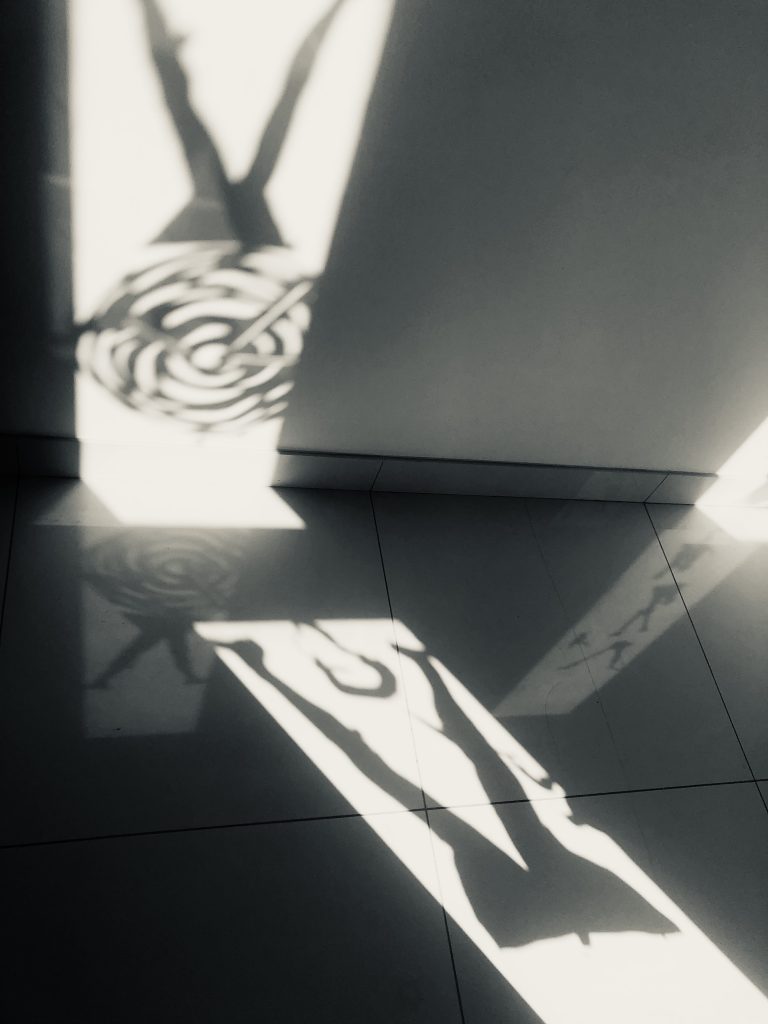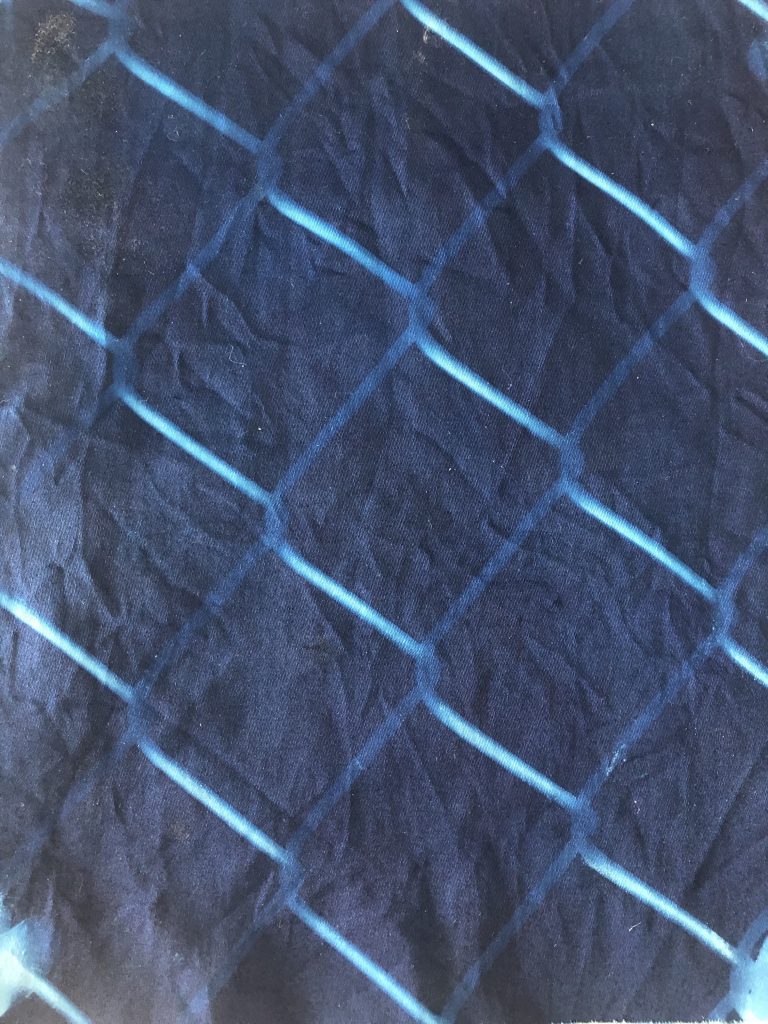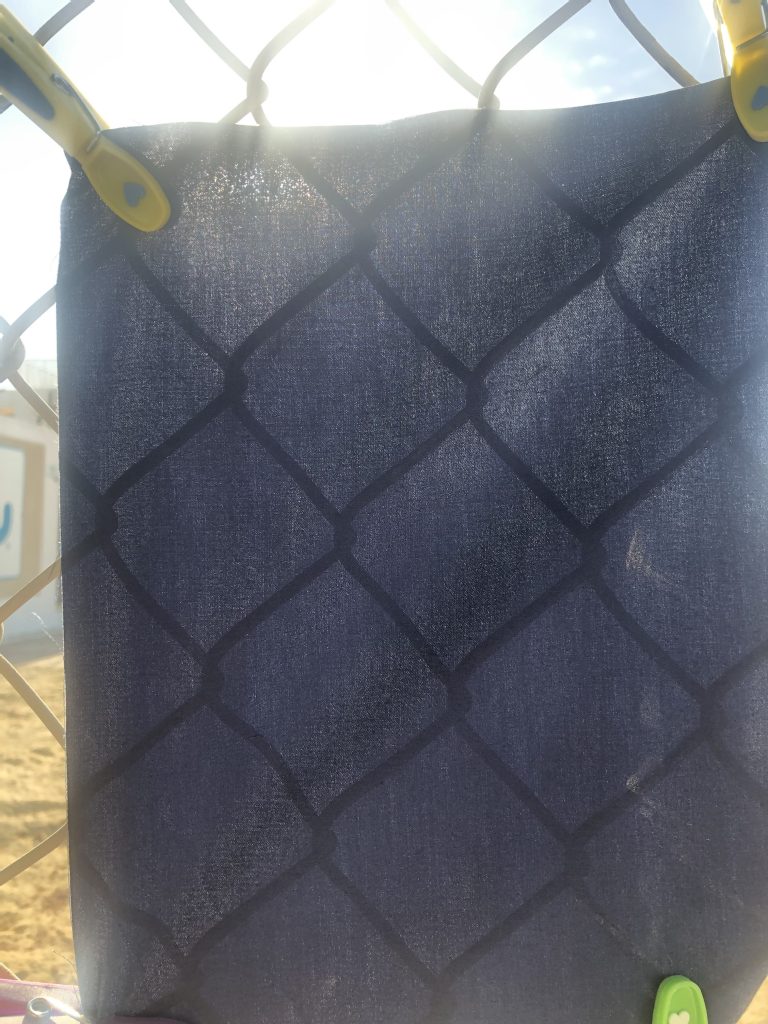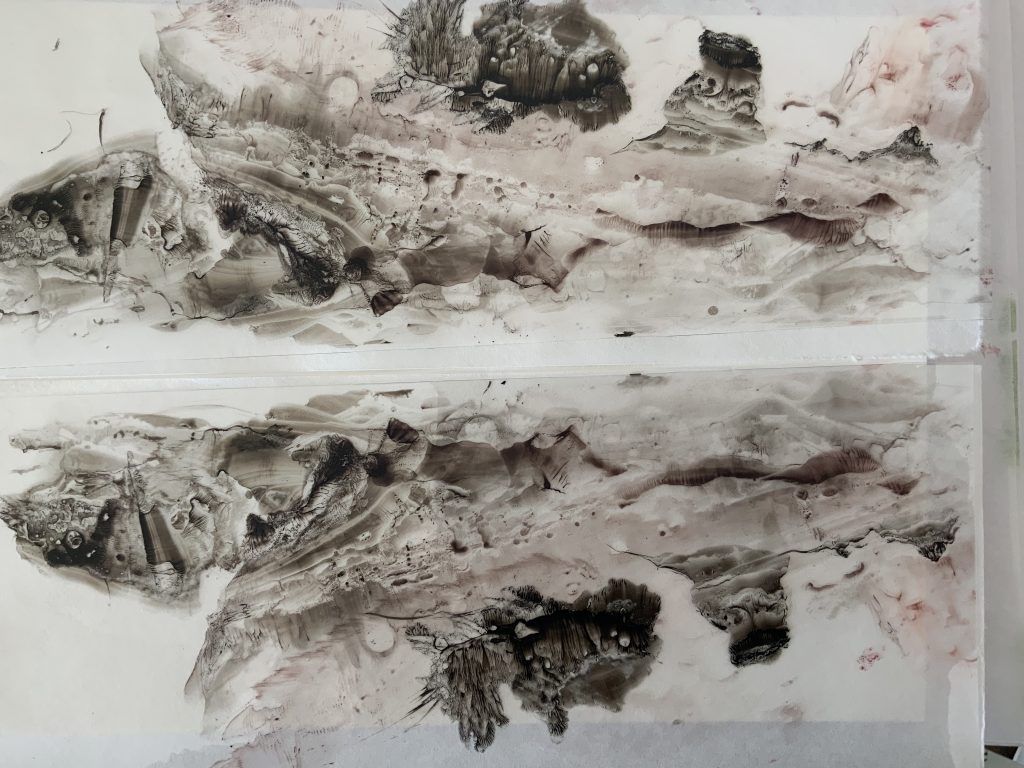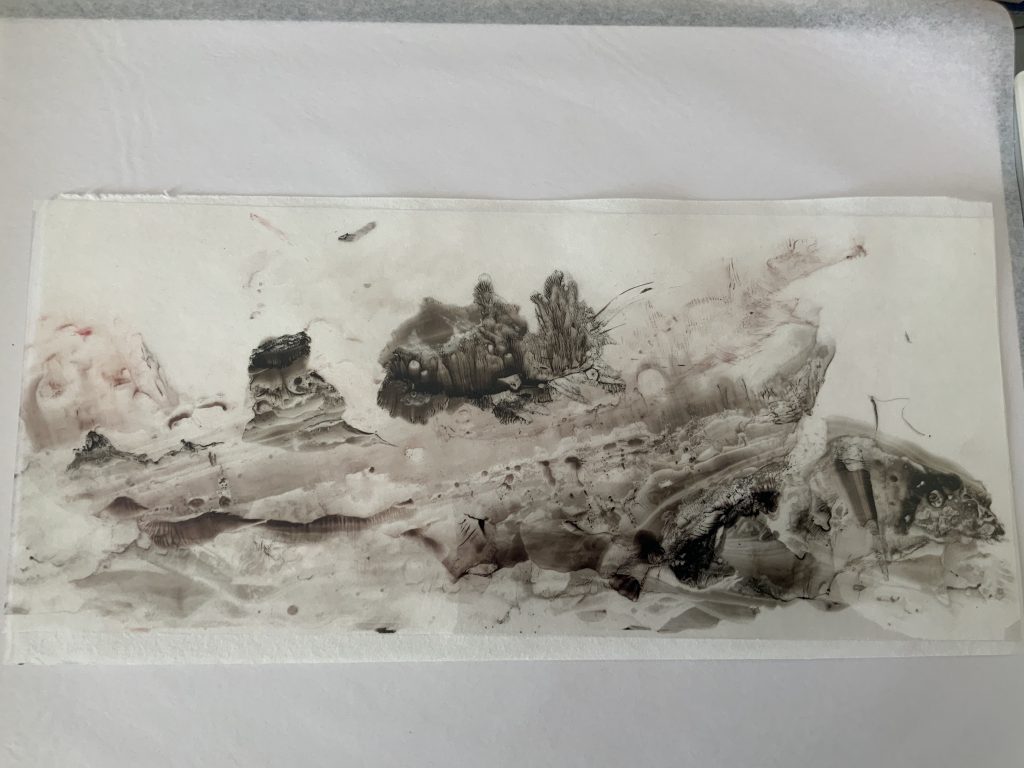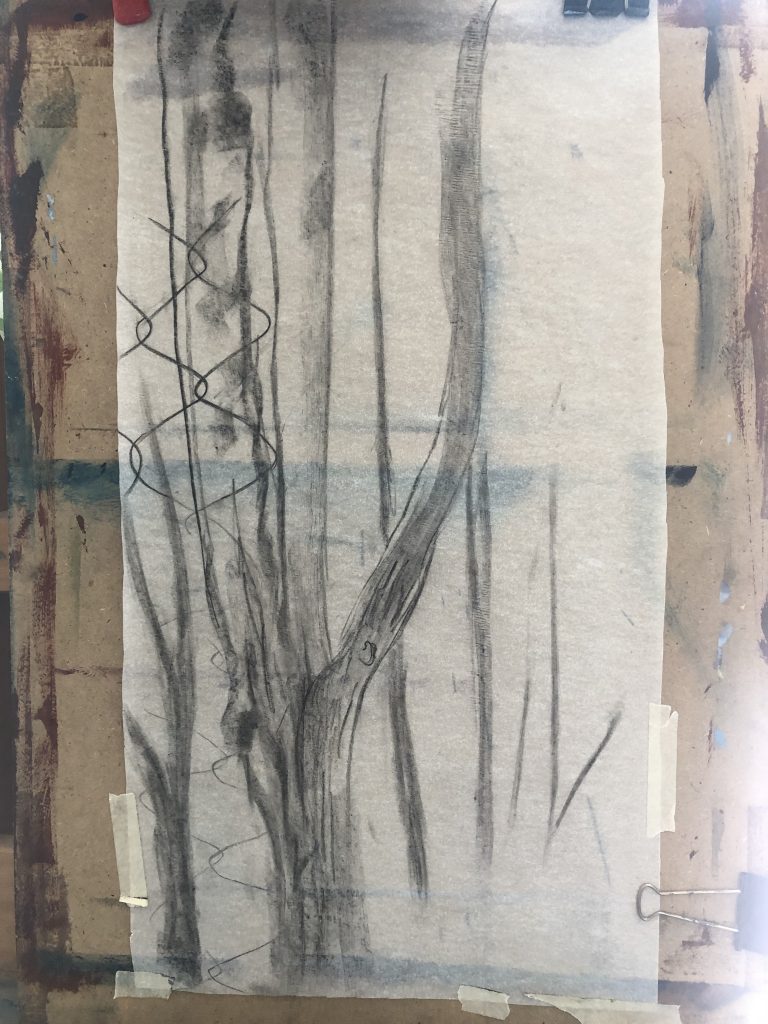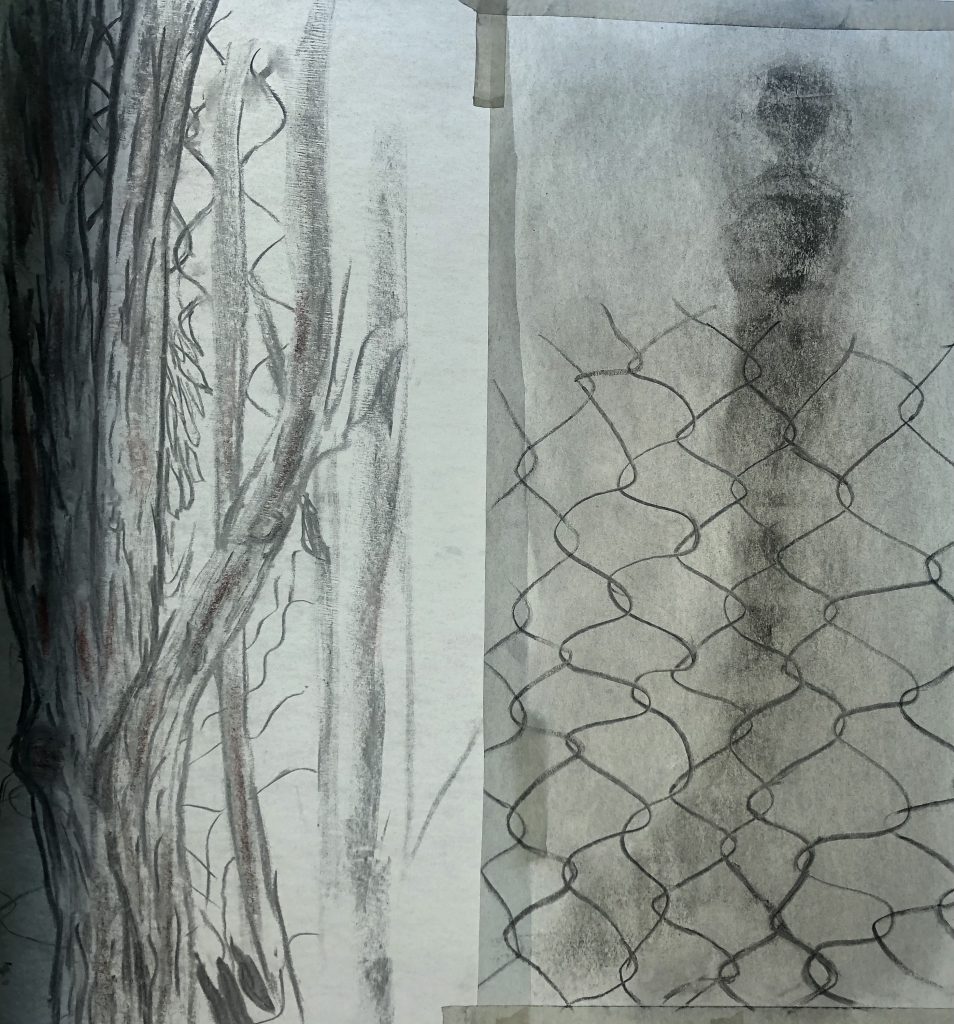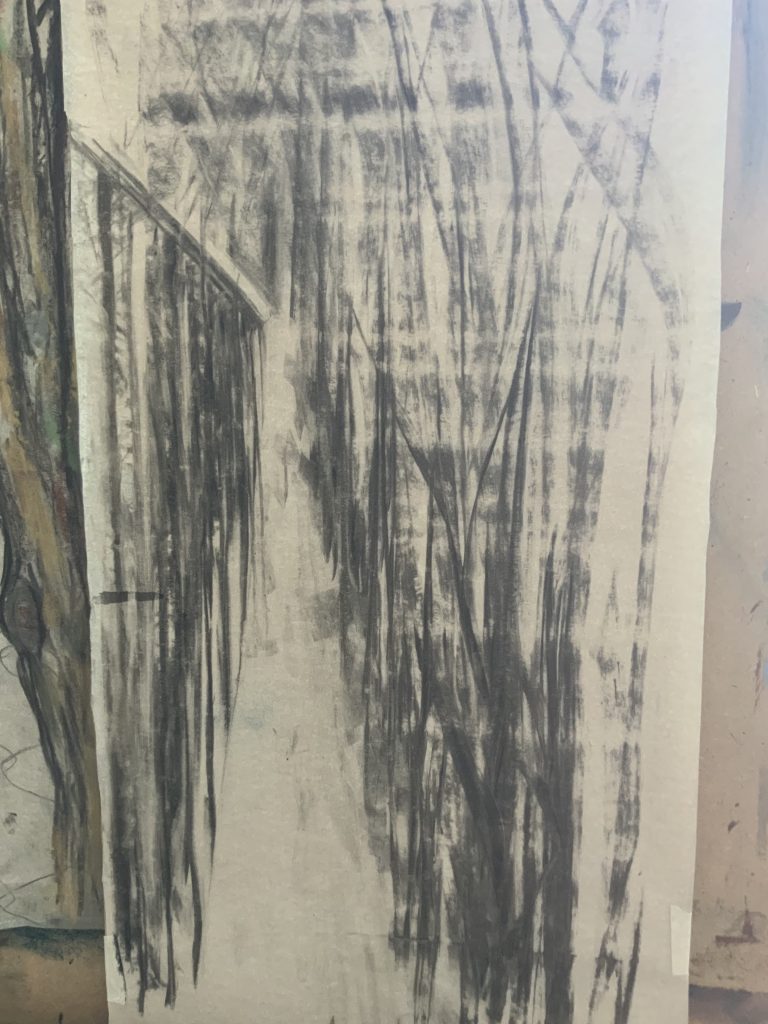RESPONDING TO A SITE
For Assignment four you will be asked to create a site-specific studio work in response to the topics covered in this part. Create a site-specific work in the medium of your choice. It can be phenomenological, social or discursive in nature. Decide how the work will be disseminated, recorded and documented and show the process and work in your learning log or sketchbook. As you prepare yourself for this assignment reflect on the reading and thinking that you have done so far. Start by developing your ideas and interrogating a number of sites through research and developmental work, before choosing one for your assignment.
Preparation
- Reflecting on reading and thinking during this part of the course
- Research ideas and sites
- Developmental work
In the beginning of this part of the course we are reminded that site of the work can refer to the physical/spatial context which it occupies as well as the social framework it sits within. During this part of the course I believe that the artist became more free, boundaries are more blurred with regards to limitations between different art forms when it comes to the definition of art within site or place. Site specificity became, during the effort of Minimalist artists, a new tradition of how art can be perceived.
Developing ideas:
I feel that by looking at my practice of walking, I became aware of looking at my place, but also aware of seeing myself being and living in this place. In a way when I start working in my studio, I am detached from the everyday life and busy with things – trying to paint my visual experiences of colour, line, shadow, light, movement and depth, but also the emotional experiences. I am aware that to do this, my body was part of the process of being aware and becoming inspired to create this experience into my painting practice.
Ideas form around phenomena and discursive, all within my walking experience – the site is my neighbourhood walks.
I would like to focus on chance or random happenings and layer it with grids which reminds of maps as the forms I want to create – a mapping of my walks. If I put measurements (standardization and universal ideas) to test, without representing it as ‘pictures’, can I make art about my walks (idea and process) site specific? Forms that keep repeating are the diamond shapes in the fence, the rectangular paving as well as formal cube shapes of the architecture of the homes inside the compound, and the colour of the water channels as well as the undulating tree border. So much of this experience of form and colour is connected to repetitive visits at different times of the day – in sunshine, late afternoon, early evening or early morning light. Colours are sandy/ochre, shades of green and blue.
I have come to admire the work of a UK based artist, Alison Churchill, who uses blocks of colour to describe landscape or things. She observes colour and tones and by using an App on her IPhone, called Brushes, she works across a photo image to create coloured squares. These works end up being 2D blocks of colour, but that is where new possibilities start!. I like that most of her works are created or inspired by walks and the opportunity to see more intimately influences her art practice.
I looked at the ‘map’s I create everyday by walking different routes within this compound (grid form available on google maps) and considered how this could translate into work. Thinking about walking is in a way a tracing of everything that happened or was experienced during the walking. I listened to an interview with Ricard Long on Youtube (MCA, Australia interview with the artists) and loved his description of his work as that ” of making trails/tract as an evidence of his passing” . I agree that it is a private activity, just as working back in the studio. What I really loved is when he said that he learnt it gave him the freedom to make art anywhere in the world. He saw his maps as describing what he does – making lines.
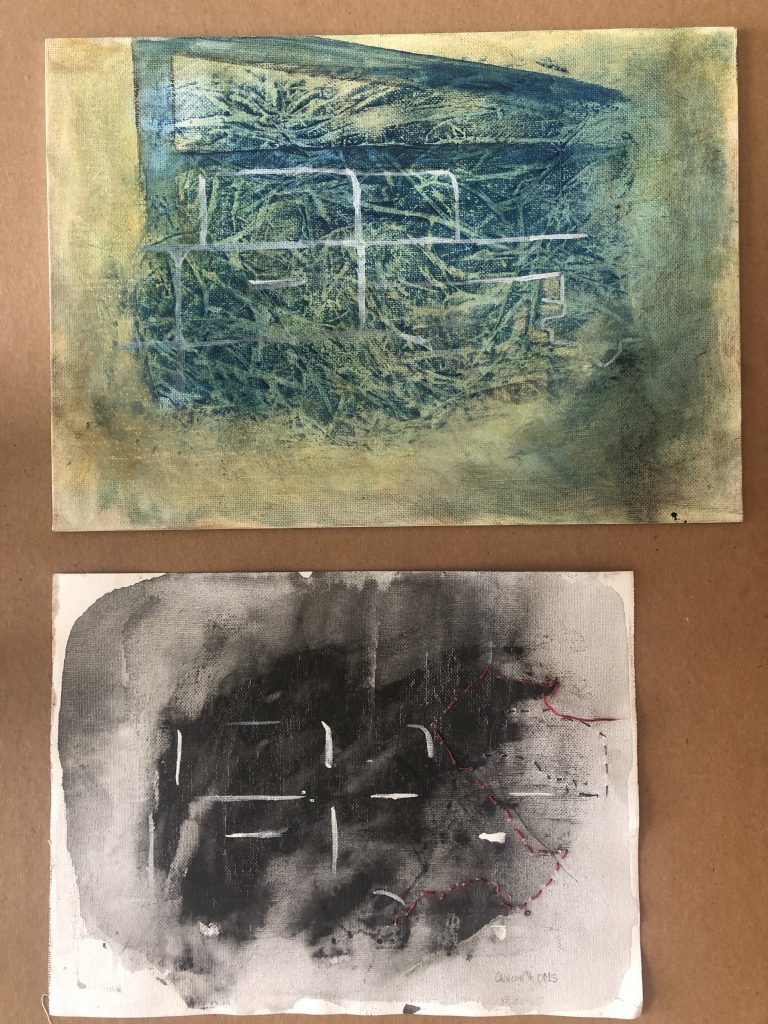
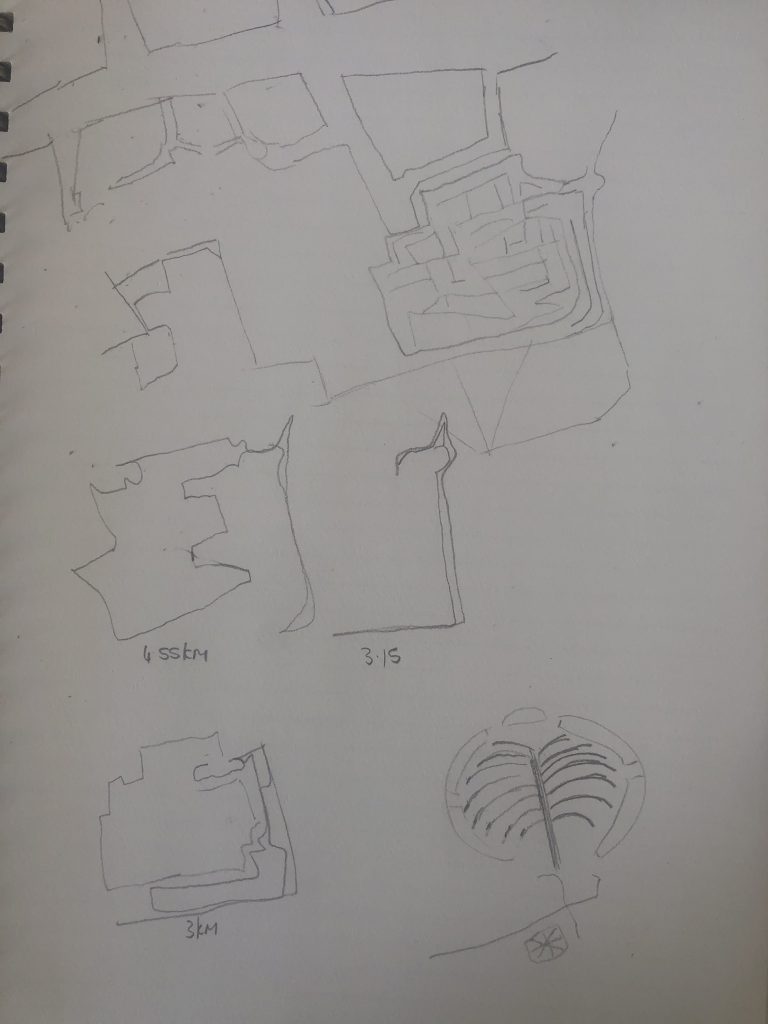
A grid is a network of evenly spaced horizontal and vertical lines used to identify locations on a map. For example, you can place a grid that divides a map into a specified number of rows and columns by choosing the reference grid type. Collins: ɡrɪd mæp) NOUN geography a map on which a network of horizontal and vertical lines are superimposed, for locating points a town whose grid map has been so savagely redrawn.
Below is two different walks – the one inside the compound and the other outside as well as inside. The one was 5km long and and the other 4.3km long. I walked on a sand dune to look at the small salt tolerant plants which grows in the sand – I brought plant samples back to the studio to identify and draw in sketchbook. I thought of making notes of words with regards to things I saw, thought and heard. I have to use this paper more to get to understand the layers I can create with charcoal – thinner lines would work lovely. I see my work as a process – currently the learning and exploring, which could hopefully grow into works.
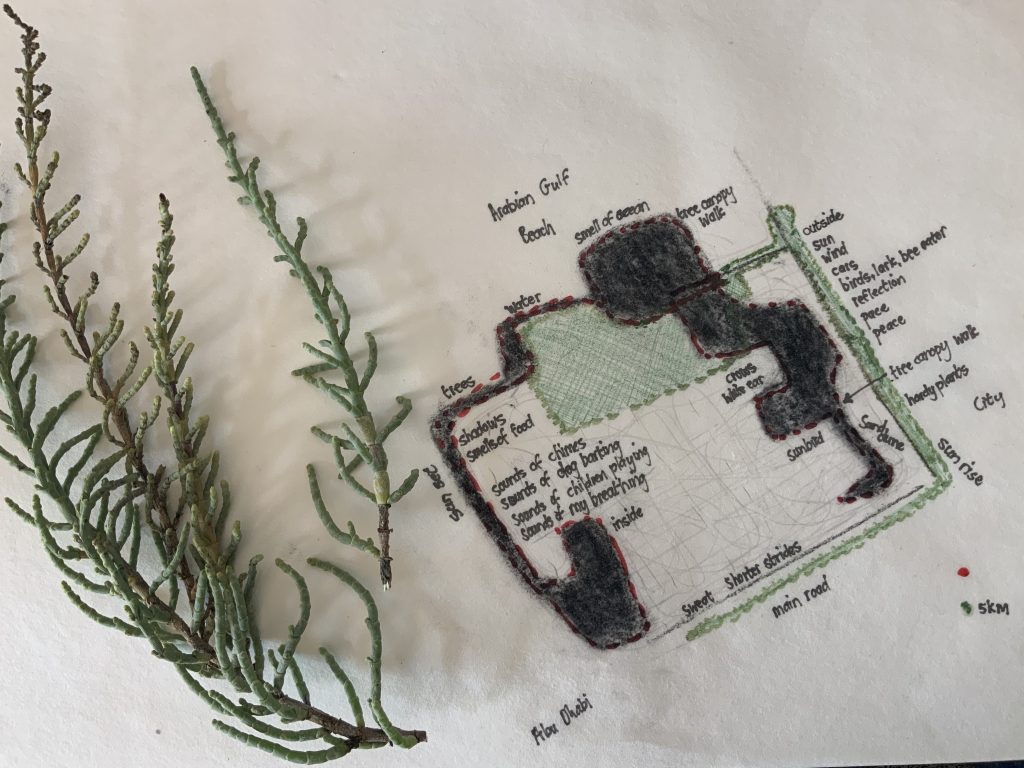
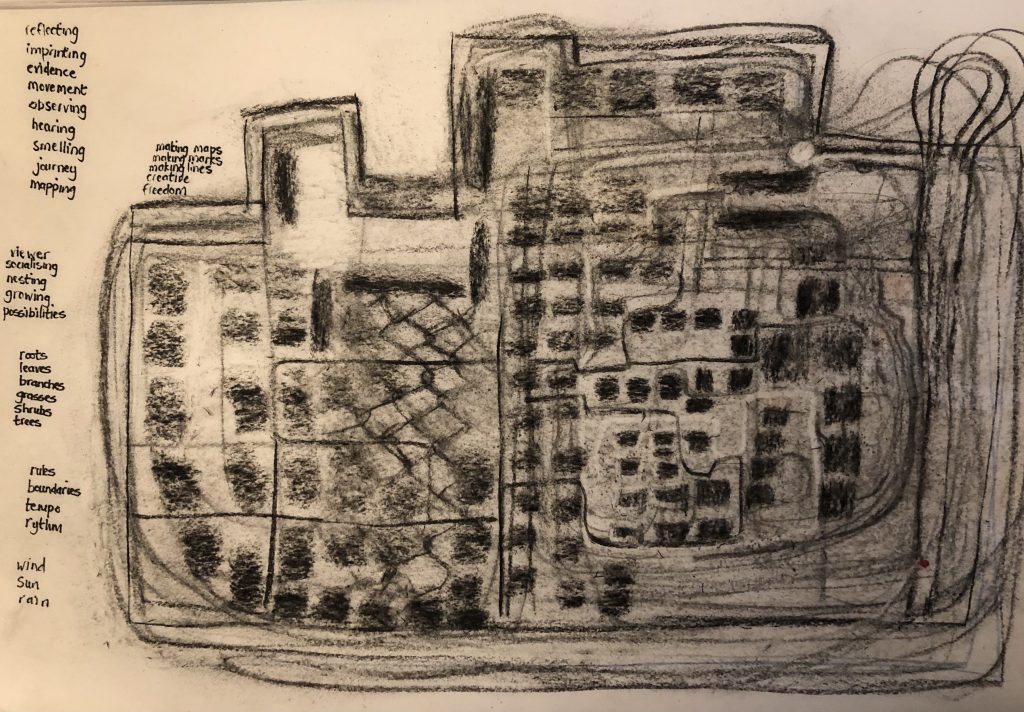
The work above was also done on Japanese Rice paper – but the effect is not subtle and explorative – I am looking for it to be more translucent. I could prepare the paper before and then work onto it with lines. I attempt to spray it with fixative and see if I could add a softer layer on top and consider adding the fenced/diamond shape pattern onto it. (Work in process, to be continued)
I continued to explore these maps and created two oil works about forms and colours of my walking. I would call them ‘maps’.
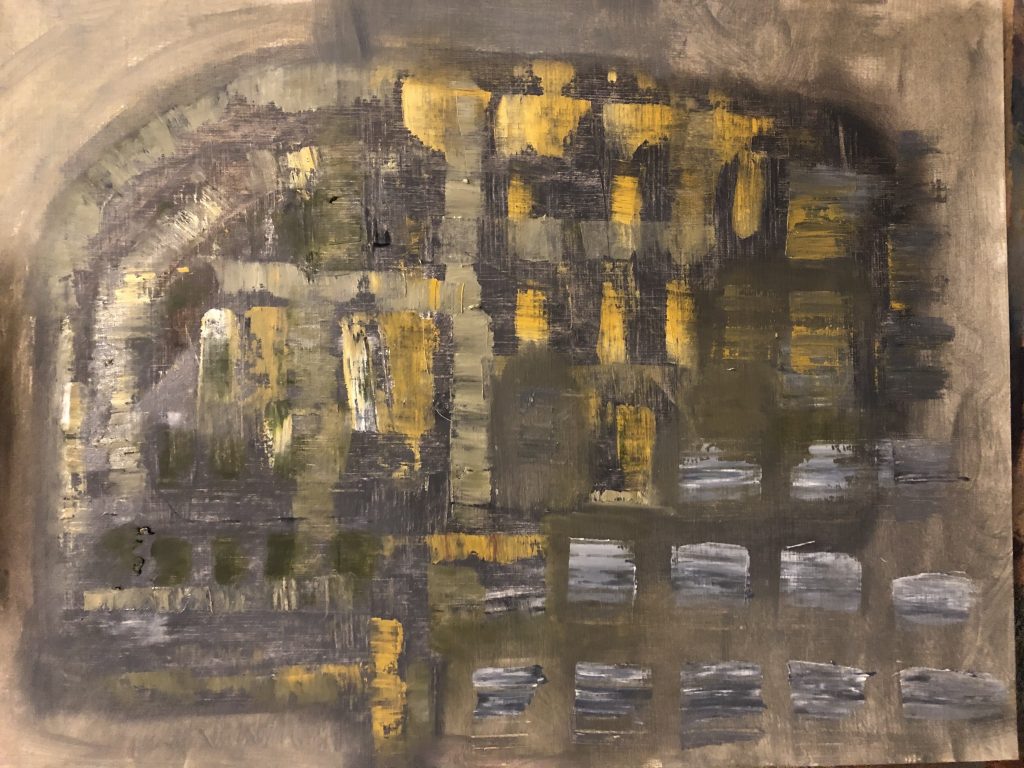
It becomes clear that I like the idea of imprints – as a metaphor for my walking and attempting to transcribe it into my work. Both these works reminds me of photographs as well as looking at a map – I feel here is potential I should investigate. Can I say I like it because there is a form of originality in the marks – because my hand made it with the material and a tool of choice? I also see that I want to address this assignment as a work in progress – a process of making of my walking. I am unsure if it is the route to take – but the experience of these phenomena is opening up discursive in my own mind and hopefully in the material outcomes as works of art.

I started using imprints when I began to work with decalcomania – I use other drawing/painting supports, from paper, plastic, board, canvas, to imprint on these experimentations with chance. Above work I can imagine developing into a canvas work with stitchings. I like the softness – fragility of the paper and the colours of the imprint. The line making should also enhance these almost ephemeral moments of mark making and footprints repeated daily. Maps can become part of creating my world of walking, reflecting what I see and experience.
I explored ideas about site in my home: – I love the afternoon winter sun in the passage windows next to my studio, and started experimenting with cut outs which I stuck to the windows and observe the shadow casts on the wall and floor – only at a specific time of the afternoon. I feel it works with being in a place, and time and duration. I started photographing these ‘shows’ and also played around with more ideas about using the space exhibiting works. I am thinking of mark making in space – here the surface is the floor and walls, but also the material paper cut that is adhered to the window. The idea was only possible if I linked it to the time of the shadow play every day – recordings had to be made to make it ‘authentic’, the cut outs are still in the windows, but I stopped taking photos on Jan 1 2021. The art for me was the freedom of choice of the space and leaving it to chance to see if it works – Christmas it was overcast, so I had a ‘no show’ that afternoon.
The awareness that you are in a body, is an awareness of space, and that embodied cognition is central to really thinking about the world.
Jitish Kallat (Video talk on Youtube)
My ideas around the trees with vigorous root systems that surround and protect my place – and how this can relate to connections and interactions with others – how we connect, also came more to the forefront when I started working with ideas of Decalcomania. It is also about how my art will connect: spatially I think about how and where I walk, I contemplate the walks in terms of how long I walked and what influenced my choices of where I walked or where my mind wandered and how I felt at that time. I think it also has to do with my own feelings of being in a liminal space and trying to find grounding in my work and at the same time be very sincere and authentic with what I am doing.
I worked more with the ideas of Decalcomania as an experiment in perception of my walking experience and it lead me to Deleuze and the idea of a rhizome. In A Thousand Plateaus Deleuze and Guittari argue that traditional thought is tree-like, in that it follows a linear pattern, branching off at various points. They employ decalcomania to illustrate the rhizome process of creating maps rather than tracings. Here the map is the origin and centre of thought, and the roots operate in multiplicities, connecting thoughts non-hierarchically. The use of the metaphor of the rhizome challenge Western philosophy and capitalism which uses images to justify hegemony of ‘the one’ or ‘unity’ over difference and multiplicity.
“Principle of cartography and decalcomania: a rhizome is not
amenable to any structural or generative model. It is a stranger to any idea of genetic axis or deep structure. The rhizome is altogether different, a map and not a tracing. Make a map, not a tracing. The orchid does not reproduce the tracing of the wasp; it forms a map with the wasp, in a rhizome. What distinguishes the map from the tracing is that it is entirely oriented toward an experimentation in contact with the real. The map does not reproduce an unconscious closed in upon itself; it constructs the unconscious.’ (1980 p12)
Deleuze and Guattari compare the rhizome with it’s opposite; the binary, vertical, linear and hierarchical model of knowledge represented by the tree (tree of life, tree of knowledge). The rhizome, on the other hand “ceaselessly establishes connections between semiotic chains, organizations of power, and circumstances relative to the arts, sciences, and social struggles” (Deleuze and Guattari, 2004/1980, p. 7). The focus is neither on the beginning nor on the end –
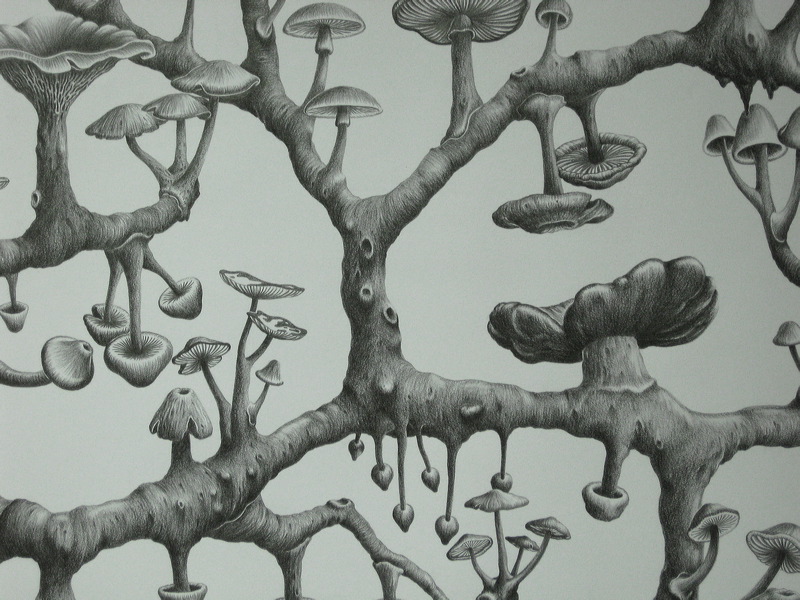
Looking at the comparison between tracing and mapping according to Deleuze and Guattari:
The map is open and connectable in all of its dimensions; it is detachable, reversible, susceptible to constant modification. It can be torn, reversed, adapted to any kind of mounting, reworked by an individual, group, or social formation. It can be drawn on a wall, conceived of as a work of art, constructed as a political action or as a meditation. Perhaps one of the most important characteristics of the rhizome is that it always has multiple entryways; in this sense, the burrow is an animal rhizome, and sometimes maintains a clear distinction between the line of flight as passageway and storage or living strata (cf. the muskrat). A map has multiple entryways, as opposed to the tracing, which always comes back “to the same.”
On the Tate website I read the following with regards to chance and intent: “All these works play on the tension between accident and intention, in how the eye and brain work together to, as Muniz calls it, create ‘accidental’ or ‘multi-stable images’. Throughout history the blot has been the rawest and most blatant expression of artistic debates about interpretation. If all art is, in one way or another, ‘seeing things’, and if all art criticism is interpretation – or, as Susan Sontag says, against it – then blots and stains and graphic accidents are, as Alberti suggested, the basis of all art. The meaningless stain, which invites the universal urge to project meaning, is the humble stage on which all arguments about art are rehearsed.”
Artists are encouraged to consider carefully the relationship between ‘the site’ and their proposed artwork. They mediate this relationship in very different ways, but for many creative and conceptual inspiration is a process and the relationship between artwork and site is about flows. Kwong refers to an interview with artist Richard Long who elaborates as follow: “I don’t sit down in front of a blank piece of paper and meditate. It’s more when I’m out and about that I have my thoughts. […] I’ll always have a general idea about what I want to do, whether it’s for an exhibition or on a walk. But then the particular conditions can change that, you know, when I get there, or I might find things along the way that I could not have known about, so I like to think that I’m fairly flexible in the way that I make art and open to the conditions of different spaces and places.”
Below is an attempt on paper with ink and yellow Gouache. The paper is not absorbing the materials well, but the colours remind me of my walking under the tree canopies late afternoons or early mornings.
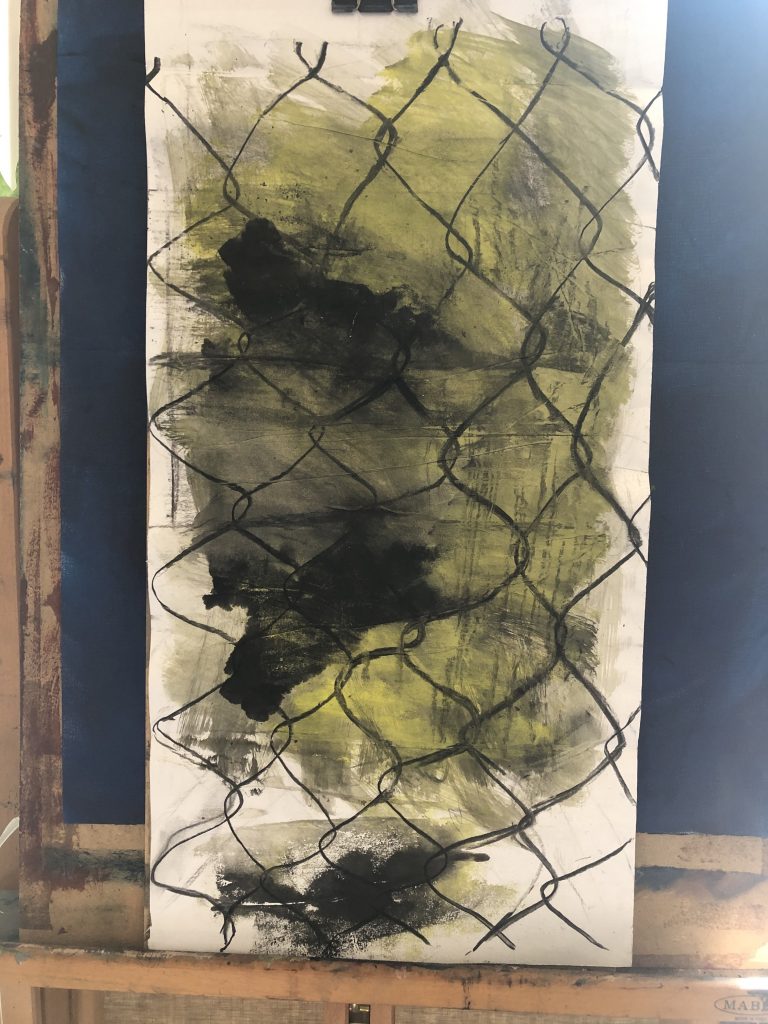
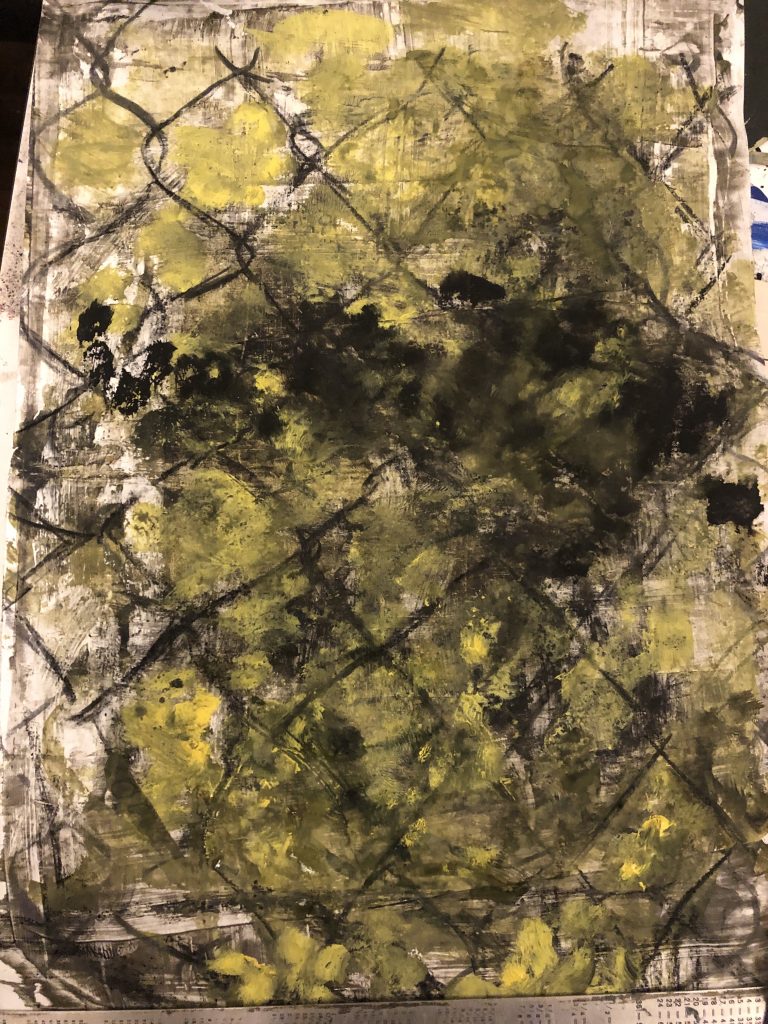
I decide to try again -this time I draw the fence first, then spray fixative, after that dried I added some colourless acrylic varnish. I paint with black and yellow Gouache as well as some black ink. I think what I learn from this process of working it that when attempting these ‘abstract’ works, I allow for ideas to fuse – become part of me and be more self aware in the process. Merleau-Ponty sees phenomenology in terms of these efforts which are concentrated to ‘re-achieve’ a direct and primitive contact with the world in order to return to the world which precede knowledge – a world I live trough not thinking it is. Is this an unbiased approach? I am thinking about intention – if the viewer understands that the nature of above process causes that the final result of my efforts is quite different from what I intended, the viewer need use a form of discursive reasoning to understand this work – if the viewer does, the viewer pre suppose that the work has a subject.
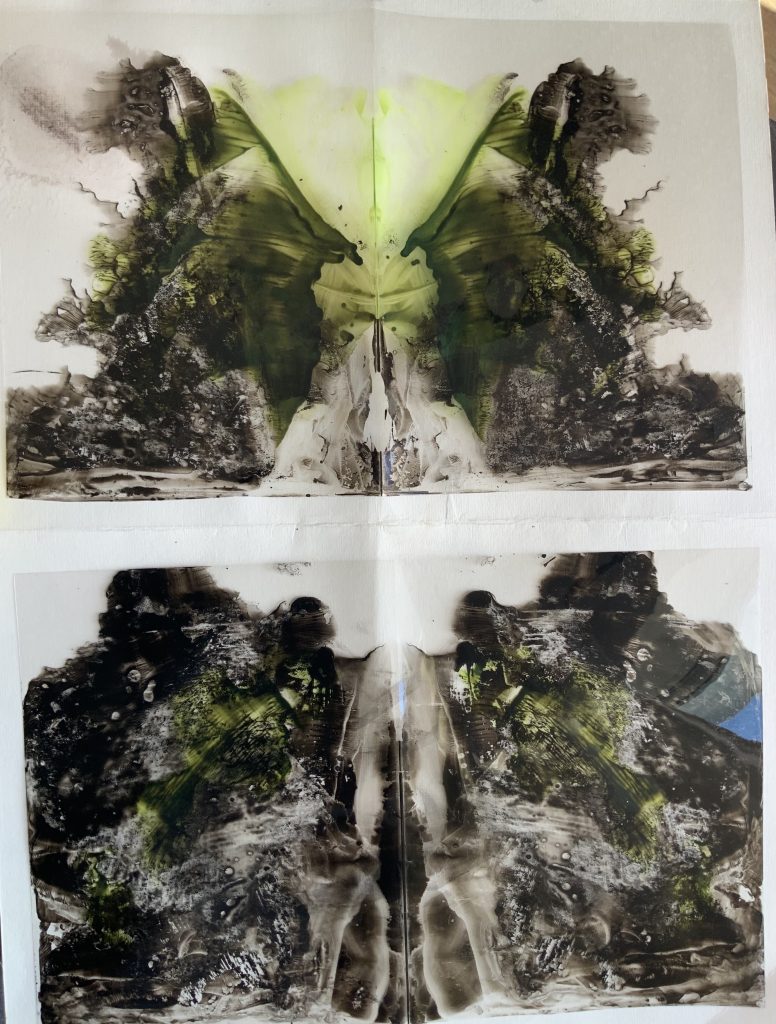
Above: Another attempt was to use the Archival Polyester film I have – I do like how the paint connects with the film and the effect of mark making on it. I use the same idea and colours as above.
Ideas to be developed can be to bring it back to some of the history of this area, it would be to the sea and the fishermen weaving their fishing nets. In Dubai local fisherman are, as per decree, permitted to have fishing nets which must have a length of up to 1,100 metres and a width of 20 metres in the western coast and 28 metres in the east coast, so they do not touch the seabed. This country has a long history of fishing and basket and fishnet weaving. Fishing villages are mostly to the North of the city is other emirates.
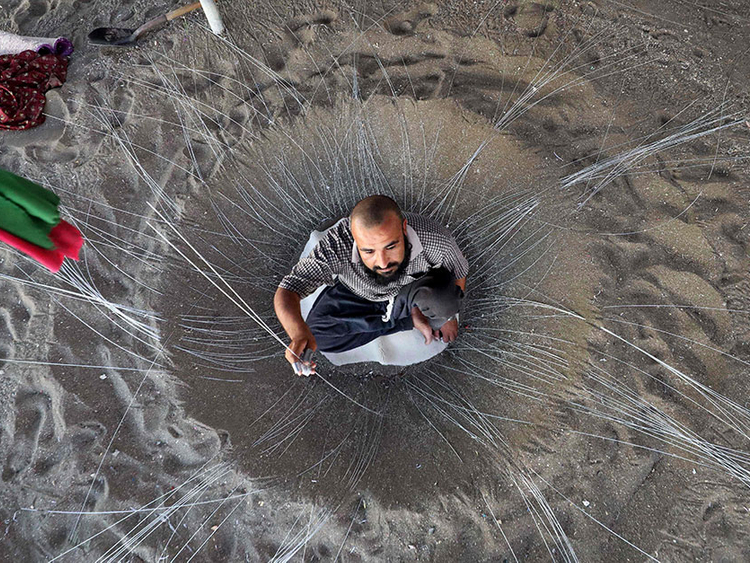

By now have become clear that I will not involve any local community in my work. I realise that I have difficult barriers to cross as an expat living in this country. I consider Kwon’s ideas when she writes about an essay “The Artist as Ethnographer,” by Hal Foster, an American art critic. Foster is many concerned with conversion of materials and experiences of local everyday life into an ‘anthropological exhibit as cultural proxies”, and also the authority of the artists, which goes unquestioned as well as many times, also unacknowledged. (Kwon, 2002:151) My main concern is objectifying the “other”.
I wanted to experiment with the fence pattern, it was a windy day and I did not have high hopes for a successful first print. I decided to over expose the print and let it hang for at least 20 minutes- the sheets are small in size, 216mm x279mm. I have some of the Potassium Ferricyanide powder to make my own mix and try it on a bigger support – I consider canvas as well as the vellum paper for these prints. The important thing is getting it into water for a few minutes after the exposure to light. I will continue during January to explore this process in my Parallel project. I feel there is also opportunity to explore use of rope and other materials when exploring these patterns.
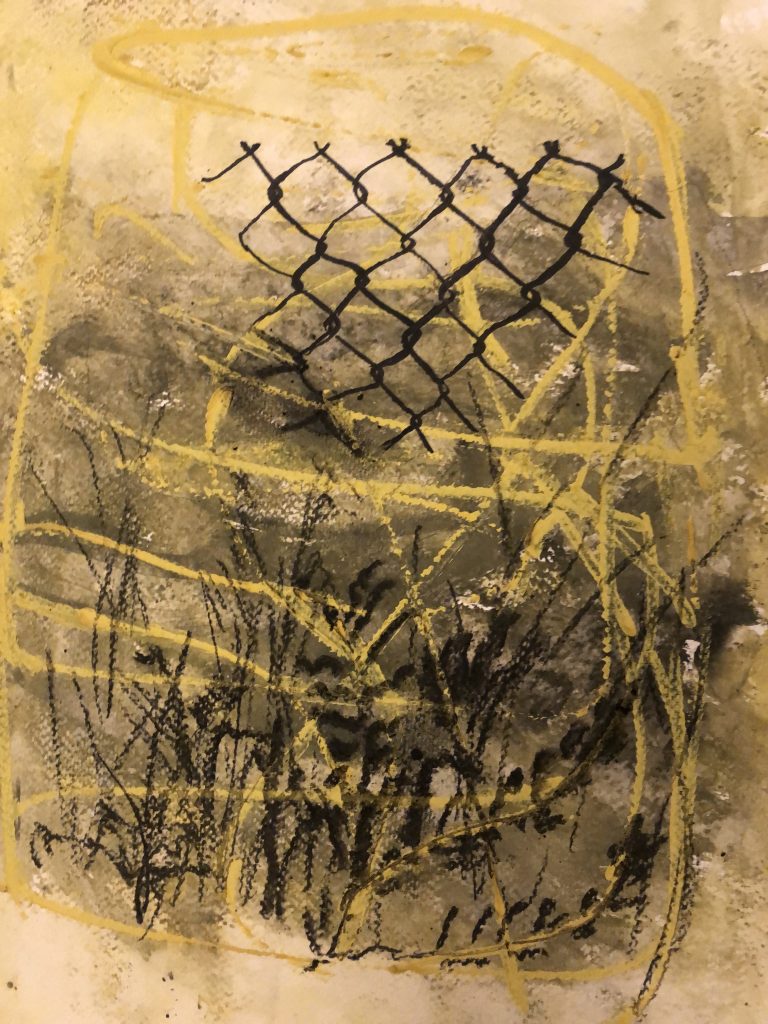
I started with an explorative process of line and place: my walking is explorative and open ended in terms what and how. I think above work is more open and going with the flow. My recent walks have made me more aware of the small salt hardy desert plants that cover these sandy areas next to the coast. I have been taking photos as making small sketches of these species, also attempting to identify them. The colour of yellows in the sand, some greens and the late afternoon sunset played into my work.
THE ASSIGNMENT as a series of works:
I am thinking about my own engagement with my environment during my daily walking practice and above mentioned discursive around this experience. As part of my daily walking practice, I began to walk as close as I can get to the trees planted around the compound – it is mostly in the sand and along the boundary fence. I feel it is an experience I can share in work and contemplate in which way I could create a work which is for and about the space. Having had this experience a view times, I started video-graphing walks, with sound of leaves under my feet, birds around me, the sounds of the community going about daily life and how light plays under the trees. I am sensitised to sounds, smells, the humidity, sun, breeze and the tree forms, colours and textures.
It is becoming clear that my walking is a form of documenting as well as learning a different way of looking at my surroundings and being open to how I relate and experience place. I cannot but relate this to a world wide phenomenon, that of dealing with a pandemic, Covid 19 since early 2020 that kept most people bound to their homes, feeling lonely, dealing with mental health issues pertaining physical contact and staying housebound a true embodied experience of place and space. I am reminded of the importance of spending time outside/nature as well as how creativity can be stimulated at the same time. Studies by Standford University during 2014 confirmed that creative output increased by an average of 60% when walking (Standford.edu, 24 April 2014)
I have made videos of my walking, as well as taken photos at different times of the day – the evening walks has been a highlight, due to the silence of the ‘outside’ world – mostly only hearing my own footsteps and that of the leaves or sand moving under my feet. The place has become a sort of sacred part of my walking. I feel inspired when I enter these walkways under the trees.
I am influenced by shadows and lines – that space where the light from the light source are blocked by an opaque object- holding within it three dimensional volume of the object. It is about many things in my encounter – the physical and social location, the route I took, the source of the light, the time of day or season, atmosphere, – so much of art history has touched on these subjects. About shadows I visit Plato and think how he used a shadow phenomenon in his Allegory of the Cave which has dominated our thinking about shadows. In photography shadows really become something ‘fixed’ – we cannot deny its reality in space. I also think these explorations emphasise the role of the unconscious in channeling creativity – but there is also the turning inwards when seeking to exploit the difference between intended and unintended – like following the advice Leonardo daVince gave. (….”if you look upon an old wall covered with dirt, or the odd appearance of some streaked stones, you may discover several things like landscapes, battles, clouds, uncommon attitudes, humorous faces, draperies, etc” )
I am thinking about how the way I view my physical landscape, influence my art practice. I feel it is viewing in a documented way – I document what I see by taking photos, videos, collecting physical found objects and reflecting on these back in the studio in writing and explorative works. The walking is repetitive, but never the same, although I walk mostly the same area, but different routes, at different times of the day, longer and shorter walks, depending on time I have or what happens during a walk. The walk is also about uncertainty, even though I repeat my walking in the same area, it still explores ideas that nothing repeated can ever be the same. I ask myself about the learning and if it will be found in the liminal space – what happened in between…
I decided to work mostly on velum paper and create images of my walking – my idea is that it could hang it like flags. (even in the footpath) I used images which feel authentic to my walking. These are drawings from walks among the trees. It became clear to me that the fence around our compound has a huge visual and emotional impact on me – my drawings kept wanting to bring these to the front.
I am thinking about my use of a fence in my work, and how it is impacted by ideas of physical, social and cultural boundaries. Fences act as so many things – possession or ownership of place ( I fence my property or piece of land, a country) it is about control over boundaries, (who stays inside and outside – who is allowed in) , protection (physical or as an economic value) , security, guidance, warning, show tension between to places or people (between countries, communities). We can break down fences, just as we break down walls, metaphorically or physically – all with consequences. To me a fence also became an aesthetic issue in the place I live – design of living spaces in urban planning and fact that this development is not completed. I can imagine the area without the trees along the fence, only the steel poles and fence and the bare sand landscape around it. Would not be a place I would prefer to live, its the desert – too open and vulnerable to the winds and sand storms The trees shelter and protect as well as give us some greenery and contact with nature as birds and other wild life utilise it. I have also come to look at the woven pattern of the fence as a kind of social link – the strength of these linkages in a community; when I draw it – it becomes loose, but stays in tact due to the connections of the weaving process – the connected lines became a focus.
Kwon refers to the dynamics of ddeterritorialization as theorized in
urban spatial discourse.(Kwon, 2002: 170) when she writes about reconnecting the uniqueness of a place with the idea to establish authenticity of meaning, memories and histories. She discuss the work of Lucy Lippard’s The lure of the Local to discuss this phenomenon – here a holistic vision of place as kind of text of humanity is considered, something which is understood from a position of the insider. I would like to state that my work presented was done from that position. I found myself in a new multi centred society and tires to make sense in my internal world by walking and mediating my ideas in my current work process. I am making it a personal relationship with place and a search to locate myself.
Whilst making these images above I felt I was involved in actions which I have never used – lifting the sheet of film, then pressing and moving my hands and fingers and even nails around the material to manipulate the flow of the ink – but it is was as if I can start and work any where on the surface – leave here, move to another area and press of lift there, and always the outcome will be different. I see the possibility of making bigger prints of these images.
THE WORK
I worked from photo images for the tree drawings. I added colour, using pastels, onto one of the drawings. I do not think it was a good choice – the series should be more about the walking under the trees, a focus on light and shadows. I think the work has potential to become bigger drawings – could work on canvas, which could hang as drapes/flags between the trees. I would like to add writing about these walks with the work- short poems could work – even written in the sand as momentarily .
The tree drawings in charcoal on vellum paper sheets of 610mm x 310mm:
I choose the size to go with earlier work in oil and I also thought about the walkway under the trees, which is not very wide. These would be able to hang onto the side at higher level that my body, in order to walk pass them. I can also imagine seeing them hanging like washing on a line over the width of the path. I attached thin wooden sticks at the back of the sheets in the hope that I can hang it. The paper kept curling – I attached thin wooden sticks at the bottom too.
Ideas I looked at and could consider:
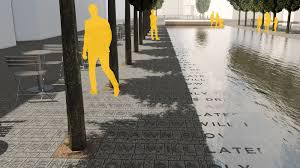
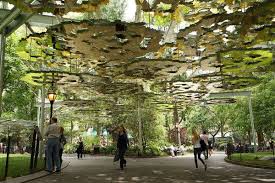

A woman stops to take a photograph of Sunset Trace by artist Patrick Shearn as it hangs above the path in Heisler Park just north of Main Beach in Laguna Beach on Thursday, November 5, 2020. The installation is for the Laguna Art Museum’s eighth annual Art & Nature Festival and will be on view from November 5th through November 15th. (Photo by Mark Rightmire, Orange County Register/SCNG) 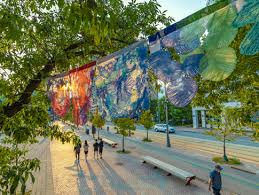
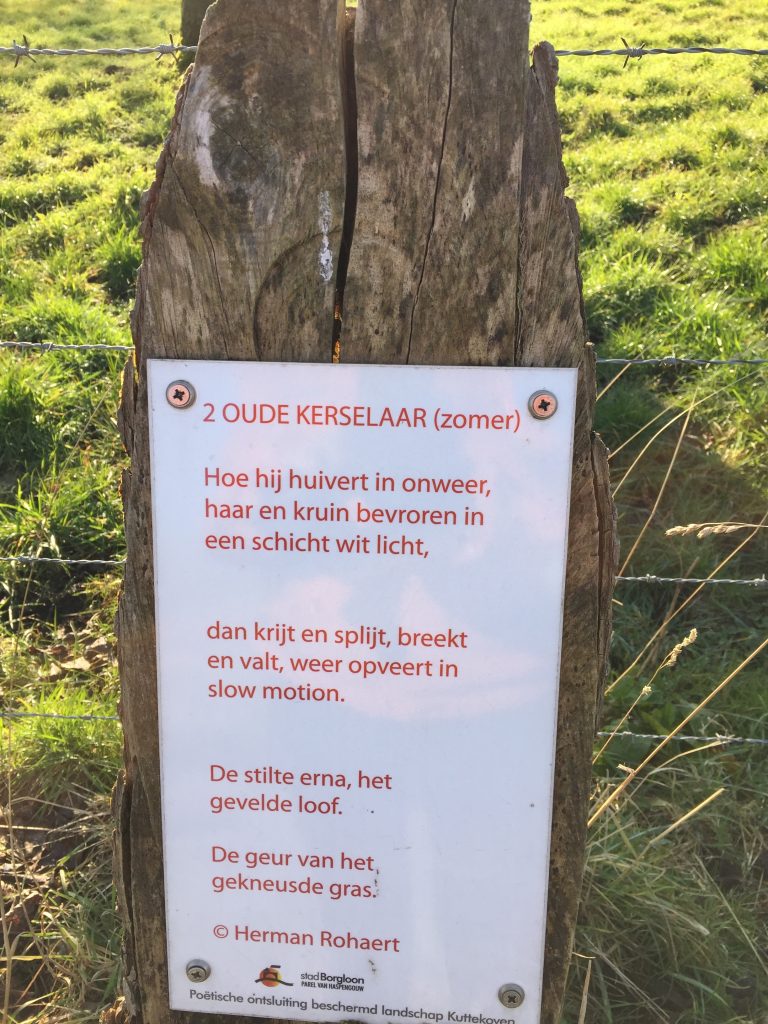
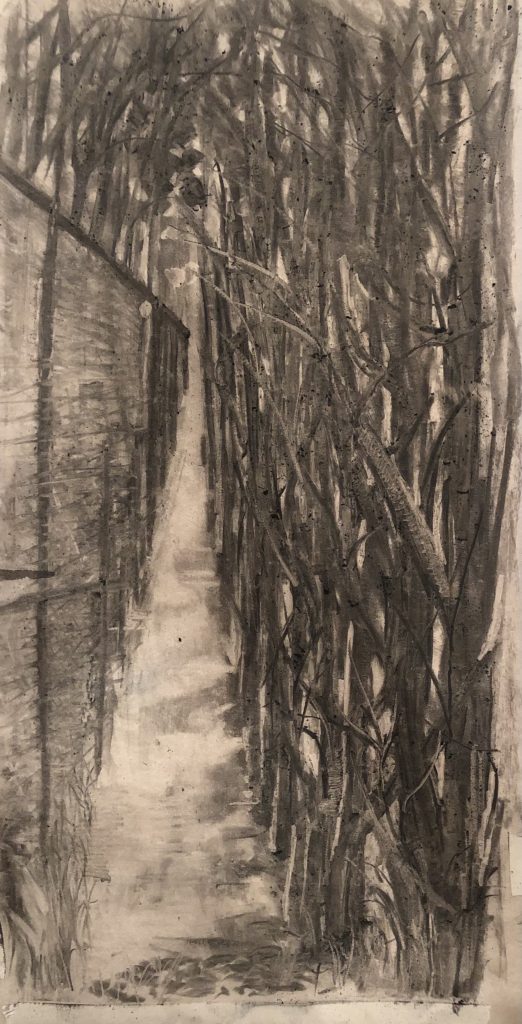
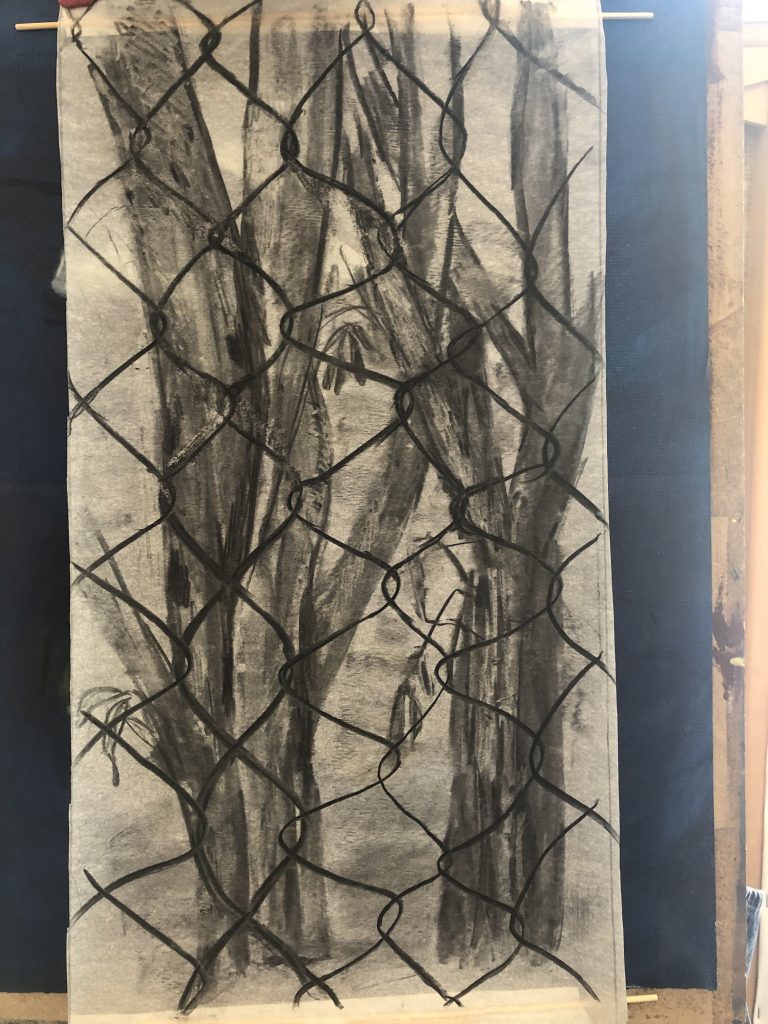
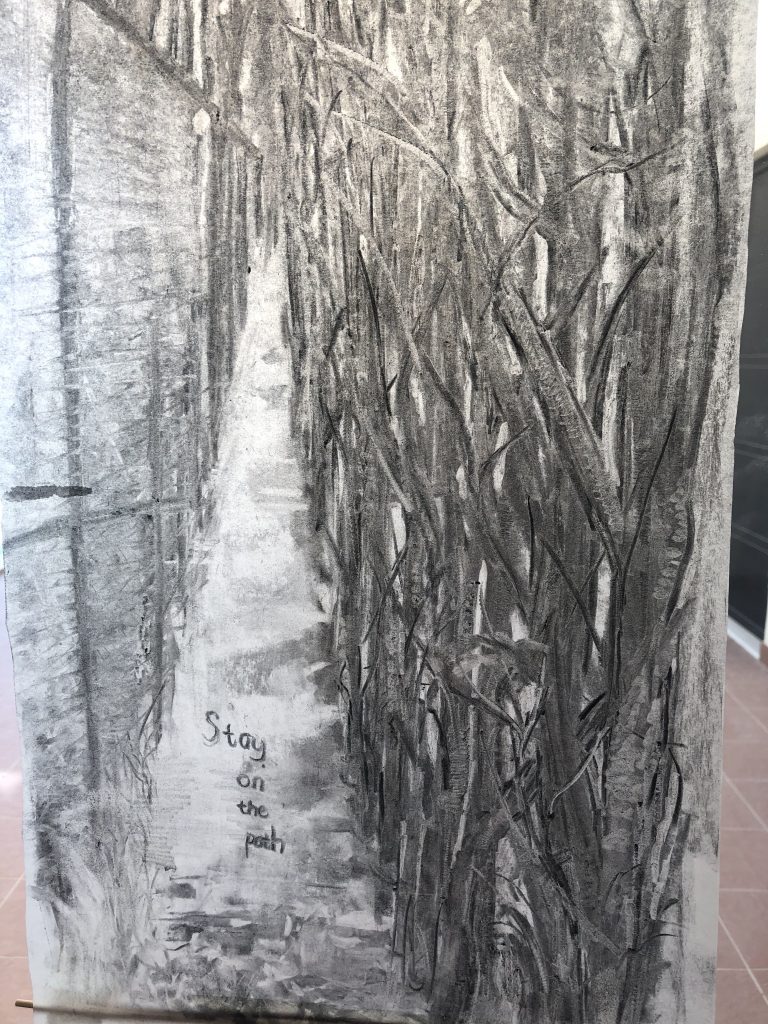
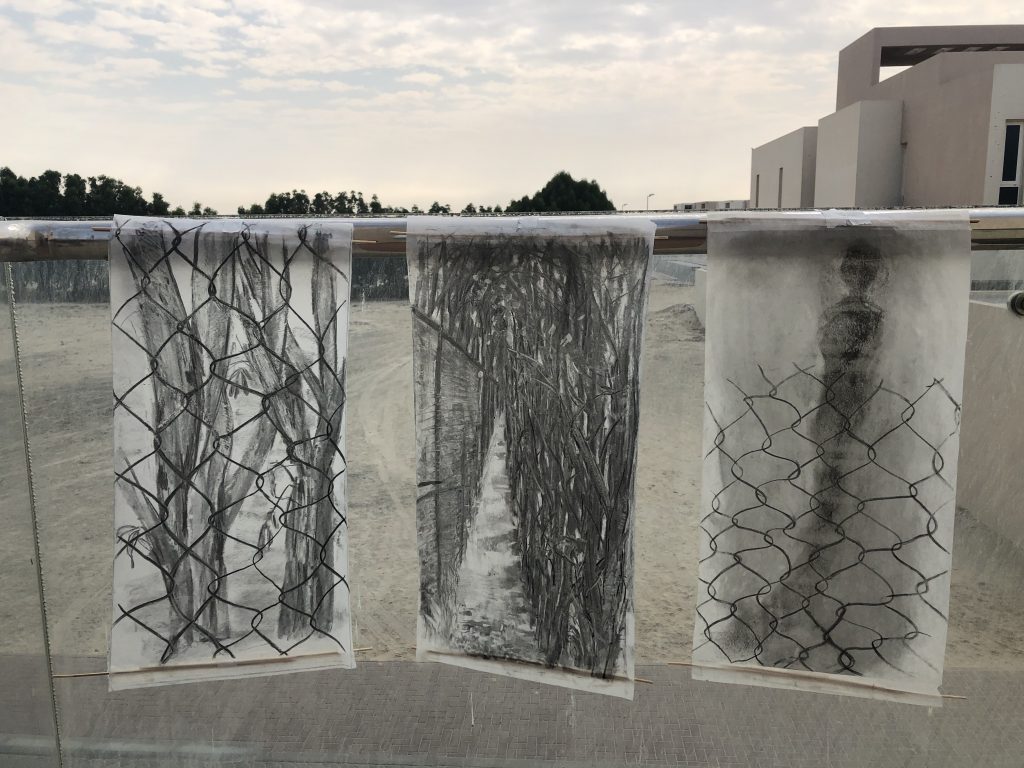
On the left is a study of the tree shapes, the middle drawing is the experience of walking between the fence and the trees and the drawing on the right is the shadow of a painting I did earlier. The shadow could be on the water, on the road as I walk – I am always aware of my shadow when I walk during the day. I am not happy with my loose indication of the fence – I should have given more thought to the design. I do like the velum paper the work was drawn on – it gives the work a temporary feel – about something that can be experienced in short fragments in between walking.
As I final thought I think as a more permanent installation the work would work if I could have it printed on metal or mirror.
Reference list
Appadurai, Arjun (1986) The Social life of things, commodities in cultural perspective, Cambridge University Press, Cambridge, UK
Christouli, Vasiliki (2016) Site-Specific Art as an Exploration of Spatial and Temporal Limitations. P hD thesis, University of the Arts London. https://ualresearchonline.arts.ac.uk/id/eprint/12037/1/V.Christouli%20THESIS%20.pdf accessed on 4 December 2020
Churchill, Allison, (2020) Instagram account to view images and read and interact with her about her work process
Kwon, M, (2002) One Place after Another:site-specific art and locational identity pdf, read online at https://monoskop.org/images/d/d3/Kwon_Miwon_One_Place_after_Another_Site-Specific_Art_and_Locational_Identity.pdf
Standford University
TATE. org.uk (1989) – A gallery talk with Andrea Fraser
OCA study material, Part 4
.
Failure may be defined as faults or shortcomings in the results, yet this is what
gives artistic practice its depth and diversity. The notion that ‘failure in art has a
different currency’ transports the artist from what he thinks he knows to the realm
of unrealisable perfection (Le Feuvre 2010: 12). It might be said that failure is
almost unavoidable when creating art, so the meaning of failure and its relevance
to the project is crucial. Failure is the gap between intention and realisation: it is in
this gap that ‘Art’ lies and where its generative processes are to be found. The
results are actually beyond expectation, unpredictable and subject to chance. In
these terms failure is not failure but experimentation (Le Feuvre 2010: 12
